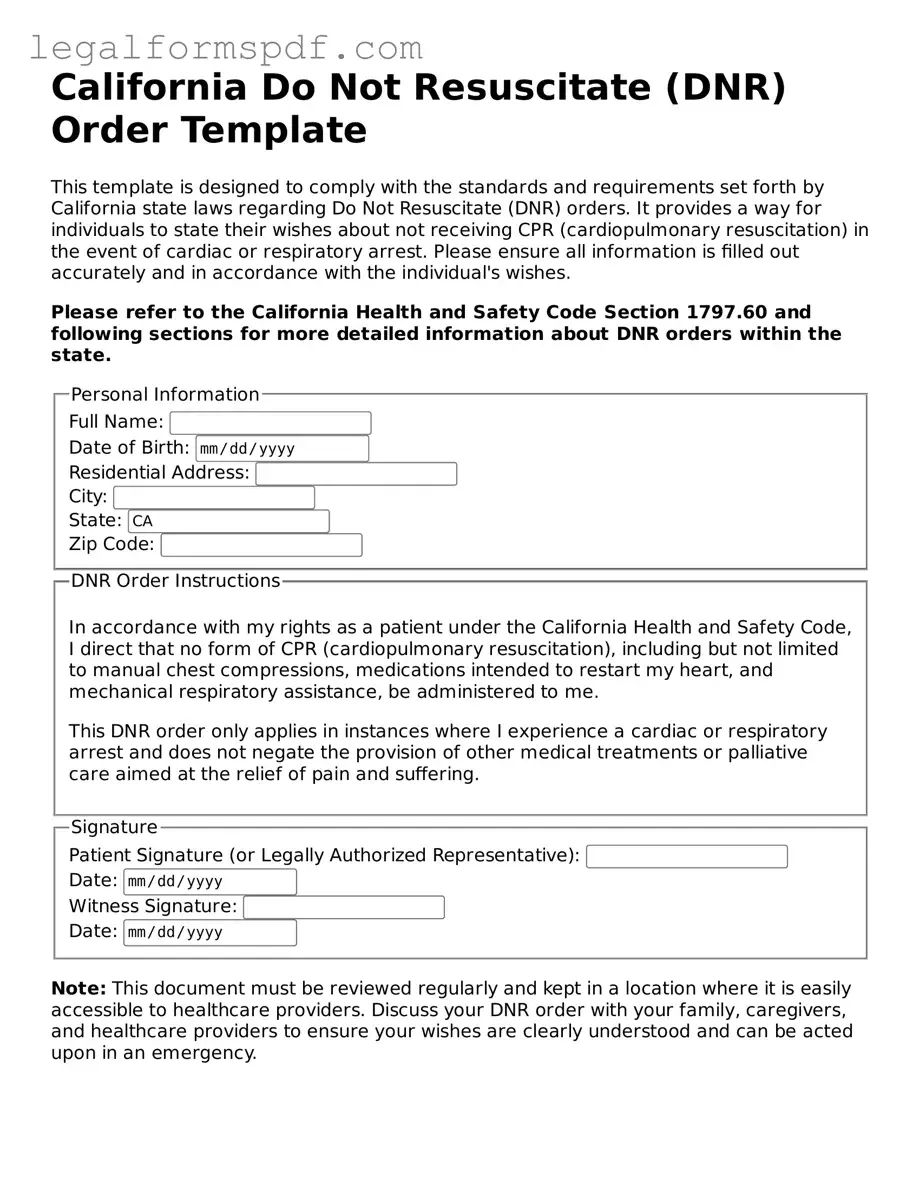What is a Do Not Resuscitate (DNR) Order in California?
A Do Not Resuscitate (DNR) Order in California is a legal directive that indicates a person does not want to receive cardiopulmonary resuscitation (CPR) if their heart stops beating or if they stop breathing. This order is used to inform healthcare providers and emergency medical personnel of your wishes, ensuring that they are respected in critical situations.
Who can set up a DNR Order in California?
Any competent adult can request a DNR Order. This includes patients with terminal illnesses or severe health conditions who decide they do not want life-prolonging treatments. A legal guardian or healthcare proxy can also request a DNR Order for someone who cannot make their own healthcare decisions due to incapacity.
How can one obtain a DNR Order in California?
To obtain a DNR Order in California, you must discuss your wishes with your healthcare provider. They will provide the necessary form, which must be filled out according to specific guidelines. Once completed, the form should be signed by both the patient (or their legal representative) and the physician. It's important to keep the DNR Order accessible, so it can be easily presented to healthcare or emergency personnel when needed.
Is the DNR Order applicable in all healthcare settings?
Yes, a DNR Order in California is applicable in all healthcare settings, including hospitals, nursing homes, and in the patient’s home. It is also recognized by emergency medical technicians (EMTs) and paramedics in the field. However, it is crucial to have the order readily available, as emergency personnel will typically proceed with life-saving measures unless a DNR Order is presented.
What happens if someone changes their mind about their DNR Order?
Should an individual decide to rescind their DNR Order, it is essential to notify their healthcare provider immediately. The existing DNR Order must be physically destroyed, and if desired, a new set of directives should be established and documented. Communication with family members and healthcare surrogates is also important to ensure everyone understands the change in healthcare wishes.
Is a DNR Order the same as an Advance Health Care Directive in California?
No, a DNR Order is not the same as an Advance Health Care Directive. While a DNR Order specifically addresses the use of CPR or advanced life support in the event of cardiac or respiratory arrest, an Advance Health Care Directive covers a broader range of medical interventions and treatments. It may include wishes regarding life support, feeding tubes, and other healthcare decisions in various circumstances.
Can a DNR Order be used across state lines?
DNR Orders are generally specific to the state in which they were issued. While some states may honor a California DNR Order, it is not guaranteed. If you plan to travel or relocate, it’s advisable to look into the specific requirements and procedures of the new state. Creating a new DNR Order in accordance with local regulations can ensure your wishes are honored regardless of your location.
